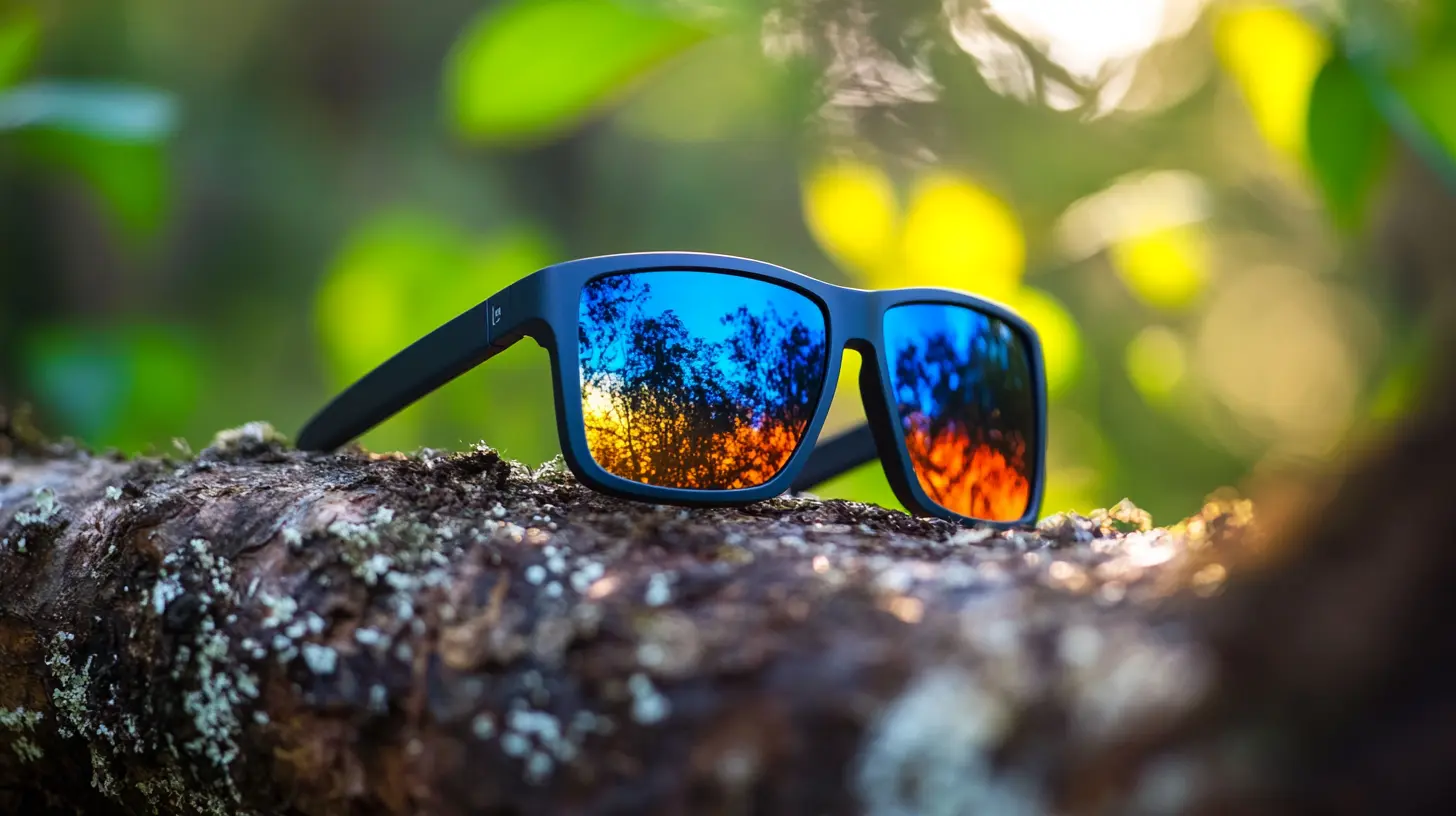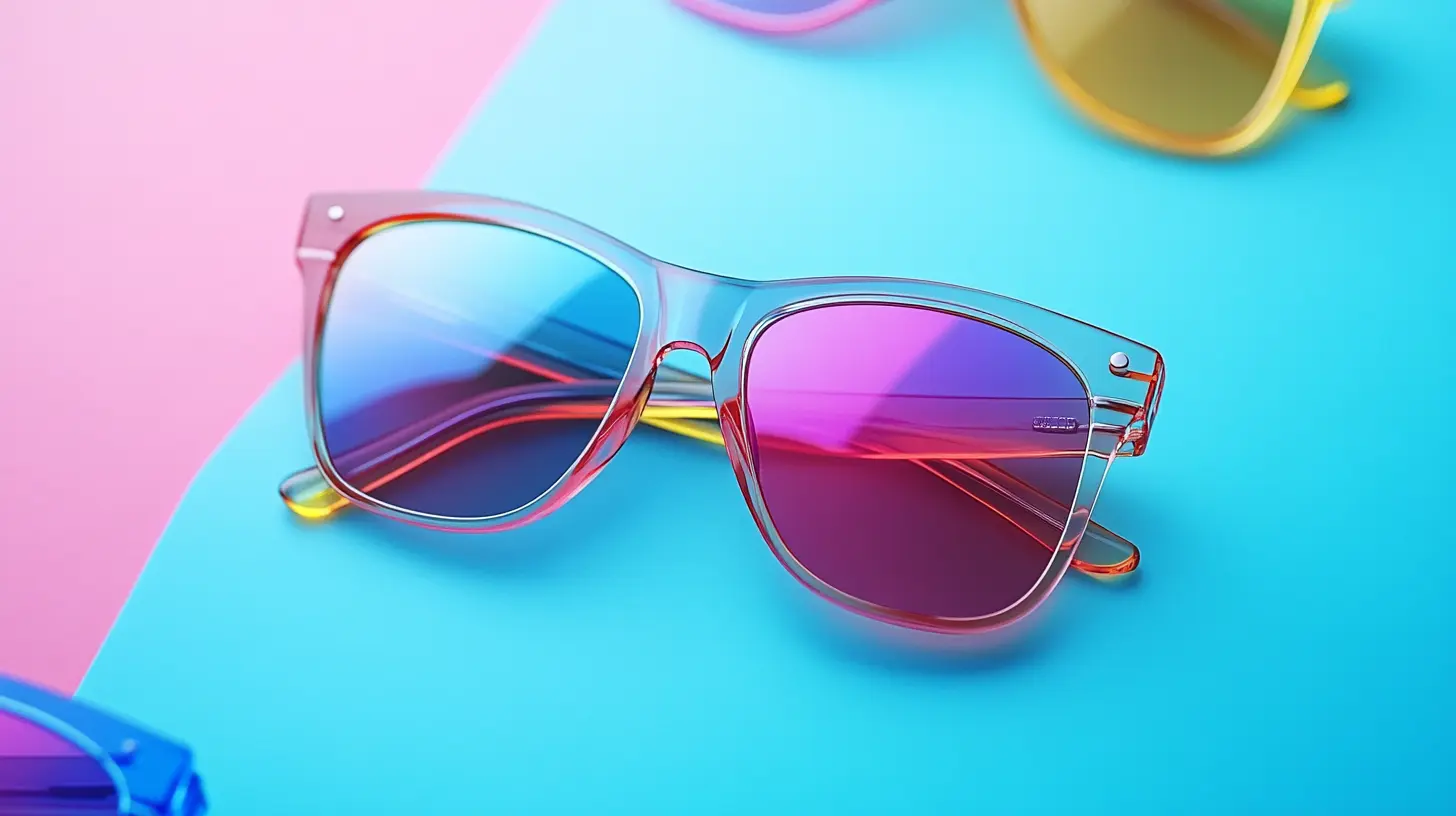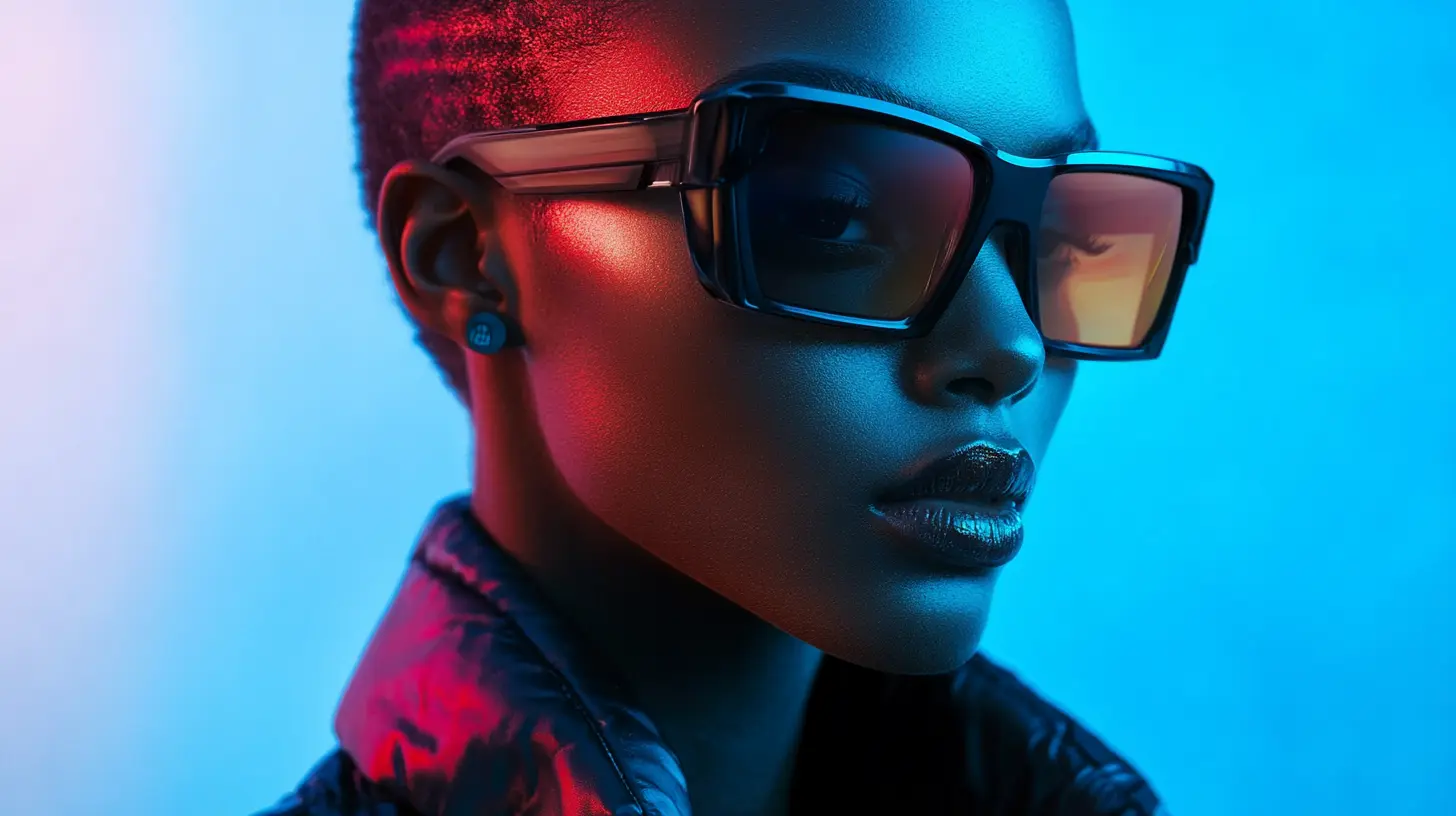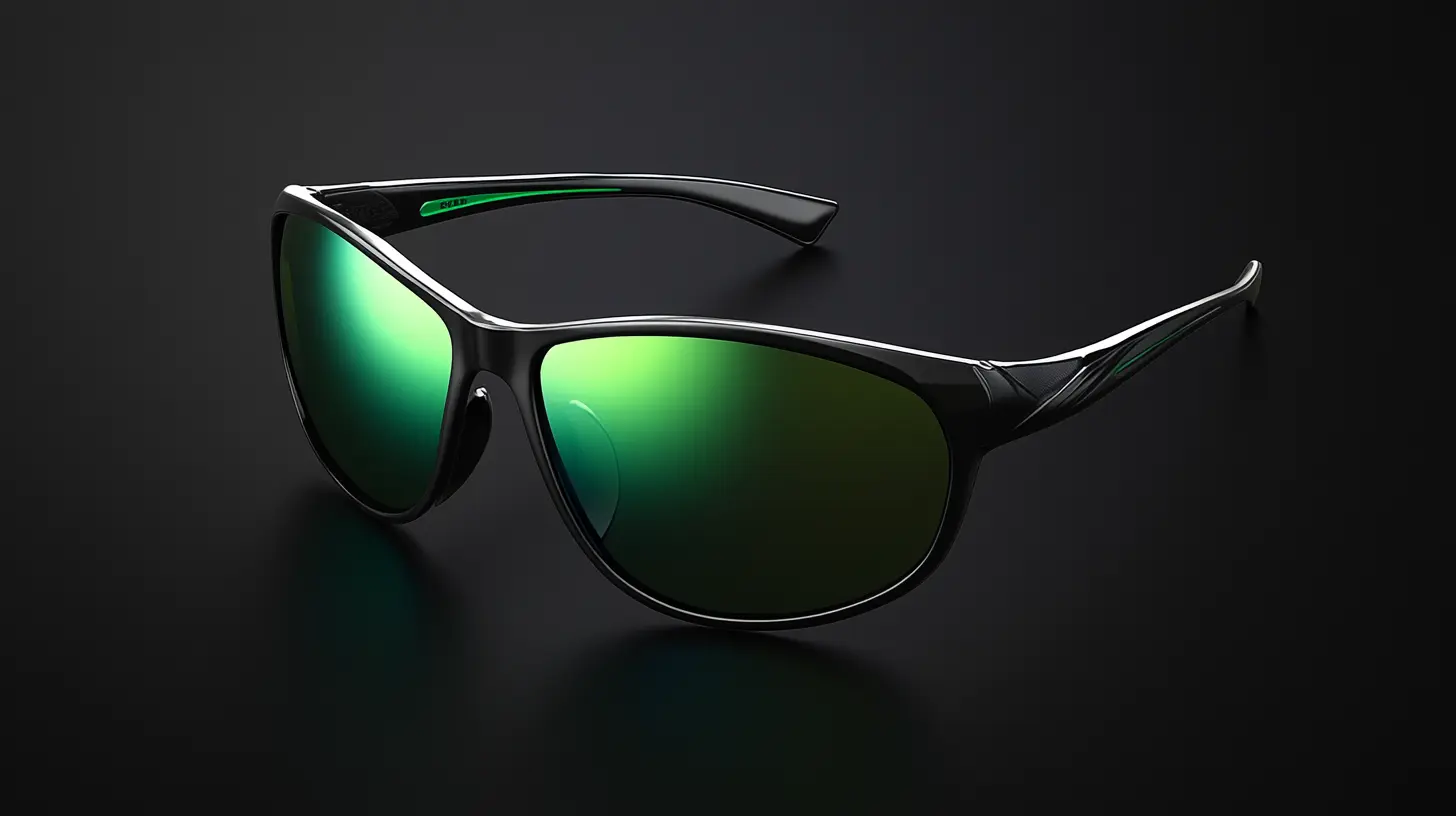To source photochromic polarized sunglasses from any global source, one must consider enumerable aspects that may affect the products' quality and performance. The design of sunglasses is as functional and versatile as the consumer demands. The rise in popularity of photochromic lenses that transition in light conditions coupled with polarized technology that excels in glare reduction has reached a crescendo. This blog intends to delve into useful insights on sourcing best practices on these innovative sunglasses so that retailers and distributors can accommodate their customers' changing needs while obsolete quality concerns.
Located in Jiangsu Province, China, JINRUISHI Optical Glasses Co., Ltd., recognizes the increasing popularity of photochromic polarized sunglasses and the importance of high lens technology. Our commitment to high-quality products encompasses a vast line of mainstream lenses such as CR39 sunglasses lenses, CR39 polarized lenses, and a range of photochromic lenses. In this way, our manufacturing experience allows us to be a strong partner for global sourcing demands in the competitive field of eyewear. Join us in examining key strategies for successfully sourcing high-quality photochromic polarized sunglasses in line with consumer trends and expectations.

Hugely favored, photochromic polarized sunglasses are built to protect your eyes while they adjust to changing light conditions. These cutting-edge lenses work on a technology that causes them to darken under the bright sun while back within the building or under reduced-light situations, they gently lighten, letting their users enjoy the seamless transition between indoors and outdoors. This transition, in turn, increases visual comfort and diminishes eye strain-on a great attraction for outdoor lovers and everyday wearers. The polarization of these sunglasses certainly enhances their utility. Polarized lenses restrict glare from reflecting surfaces-waters, roads, or snow-and are thus crucial during driving, fishing, or skiing. In reducing glare, photochromic polarizers actually amplify clarity and contrast, which makes bright endeavors more pleasurable and safer. The conjoined attributes distinguishing photochromic and polarized sunglasses from regular pairs make them extremely performance-oriented for anyone concerned with chic and utility. There are also some eye-health applications for photochromic polarized sunglasses. These sunglasses provide high levels of protection from ultraviolet (UV) rays, an important factor in preventing long-term damage to the eye. This feature is invaluable in lowering any prospect of developing cataracts and other eye-linked concerns caused by excessive sun exposure. With increasing awareness on the part of consumers about the need for eye protection, there is an escalating demand for these multi-functional sunglasses. Investing in them for personal use and retail stock is profitable.

It is vital to recognize reliable suppliers when sourcing photochromic polarized sunglasses on a global scale to maintain product quality and a consistent supply chain. Research and finding trustworthy suppliers are one of the initial tasks on this journey. Start looking into online platforms that include trade directories, supplier databases, and industry forums, where you can find reviews and ratings from other businesses. Also, attending trade shows from certain industries is extremely essential in that it would allow you to interact with potential suppliers face-to-face and gauge their credibility through your assessment of them, as well as their product offering.
Having compiled a shortlist of suppliers, their capabilities and reliability need to be assessed. Ask for samples of their photochromic polarized sunglasses in order that you may assess quality in your own right. Also, question them about the methods used in production, the materials used, and compliance with international standards- this is an indicator of their commitment to quality control. Equally important is establishing a good communication path with suppliers, fostering transparency and establishing a long-lasting relationship for both parties.
Another equally critical element to consider is the capacity for the supplier to scale according to demand variations. The right suppliers should display flexibility and capacity to align with your business requirements — from peak seasons right through to sudden and unexpected demand shifts. By following these best practice principles, you will have the confidence and assurance to choose suppliers aligned with your business vision and capable of growing your product lines in the highly competitive eyewear market.

In the past several years, the great demand for Photochromic polarizing sunglasses worldwide has been emerging as consumers realize the active relevance of eye care in fashion. However, bringing it to one country from region to region would require vigilance and knowledge of quality standards to guarantee the safety and satisfaction of the users. The newly released report from Shandong Provincial Market Supervision Administration throws new revelations about the quality of sunglasses in China, where 31 batches of products were subjected to tests, thus further making evident the increasing regulatory phenomena.
In the research conducted in 2023 by the industry, it was found that above forty percent of the consumers aggressively focused on selecting sunglasses "based on lenses" and "UV protection," displaying the great market segment for kidsters using photochromic polarized eyewear. The assessment of quality standards must therefore be keen when sourcing from around the globe, given that different manufacturing practices often yield different results in the performance of those products. Often makers can refer to the international requirements, such as the use of ISO 12312, which prescribes minimum UV protection levels for most products to be considered safe for use by the consumer.
Besides, it is now common for lenses to integrate polarized and photochromic technologies into modern sunglasses, thus doing a better job in their functionality. It is said that the products with these options could minimize glare and enhance visual comfort. As a result, this feature will appeal to the outdoor-loving portion of society that holds both aesthetics and practicality dear to its heart. Diving into the above-mentioned complex global sourcing situation, such understanding of local and international quality standards will be a vital issue in keeping brand integrity along with consumer trust in this competitive market.

Shades for alternate lightings glare-competitive sunglasses from people worldwide are to take proper attention to the import regulations associated with each market, as almost at every level a country has its unique laws and tariffs which could impose or have a lot bearing impact on the price and practicality of sunglasses in bringing into the localized Mexico. Take India, for instance; recently, the import duties were hiked, not only having the very high basic tariffs but an extra 10% also on the top. This was for a reason, trying to promote the boost of domestic consumption while stifling the inflow of foreign goods.
Through it, businesses need to invest in market research to ascertain applicable tariffs for the importation of sunglasses and any other duties that might apply. Understanding market complexities makes it possible for importers to determine how much product to import at what cost. This also means that keeping abreast of international trade policies coupled with local regulations discerns any anticipations on altered pricing strategy and supply chain logistics that might result on such alterations.
Enterprises will also be guiding themselves toward the understanding that there are usually requirements for compliance that accompany the importation of photochromatic polarizing sunglasses, such as quality and certification processes. If these are addressed early, the company can avoid the subsequent pitfalls that may arise during customs clearance, thus enabling a seamless entry into the target market. This is a strategic dimension that reduces risks and improves performance over and across global sourcing in today's highly competitive scenario.
More and more brands have become committed to sustainable sources while creating photochromic polarized sunglasses. An eco-friendly supply chain illustrates the building customer advocacy over the use of UV protection products while contributing to the welfare of the world. Sustainable sourcing is about everything that contributes to the development of a lower ecological footprint-from the kinds of materials one uses to the production processes involved.
Among them is the use of recycled and organic materials. Increasingly, brands switch toward biodegradable frames and lenses manufactured from recycled plastics or bio-based materials in terms of sustainable production. This approach reduces waste created and puts brands in a spotlight where they would not only care about the environment but also embrace circular economy principles. Material sourcing locally can, besides, reduce the impact of transportation on the environment, thus putting down carbon emissions.
Besides, ethical practices in production are equally vital in sustainable sourcing schemes. Ethical partnerships for sourcing involve manufacturers who practice some sort of fair labor standards, water input reductions, and renewable energy for materials processing. This ensures not just the credibility of the brand itself along the entire production chain but also builds a culture of transparency and accountability within any source and manufacturing organization. Not to mention that these practices would, in turn, attract the ethically-minded consumers, making it a good-for-all scenario because they also set the pace in the industry for making the greener future possible.
In the competitive scenery of the sunglass industry, forging good supplier relations would only help in successfully sourcing photochromic polarized sunglasses in the global markets. As per a report from Grand View Research, global eyewall market is expected to reach $267.2 billion by 2027, and sunglasses itself would take a considerable share of this market. This implies that these companies should able to get good suppliers for high-quality products which consumers will always demand.
Building strong supplier relations is basically establishing effective, open channels of communication. It allows the parties concerned to better define product specifications and timelines. According to the latest survey by the Institute for Supply Management, 79% of companies have reported being able to improve product quality as a reason for having good supplier relationships. This shows the importance of regular contact and trust-building in order for both sides to immediately address and innovate around challenges.
Developing suppliers is, in turn, beneficial to both manufacturers and suppliers since it enables them to enter into a relatively long-term relationship. According to a study published by McKinsey & Company, the active development of suppliers reduces up to 20% of the costs and increases quality in incoming materials. In addition, brands may cooperate with their suppliers to empower them by exposing them to market trends and product evolution for the sake of improving their capabilities, so that they are in the position to adapt with the consumer changes, particularly about new features like photochromic technology.
It is about managing supplier relations because in this modern era of eyecare that is increasingly bringing complexity due to global sourcing, good supplier relationships enable efficiency in operations and can also lead to innovations that will keep companies ahead of the competition.
However, it might also be worth mentioning that some photochromic polarized sunglasses have gained popularity among many people in the eyewear category, primarily due to the rapid technological development as well as the rising consumer inclination for multifunctional products. One popular revolution today is that of smart functions on these multifaceted eyepieces, allowing them to use smart apps and still enjoy additional fun while making sense of the advanced technology. Another part of the trend focuses on the newest launches by brands in the eyewear market: for instance, some brands have been integrated with smart audio-coordinated active sunglasses in their line, in an attempt to capture the market of technically savvy consumers.
Points are indeed giving way for the most sophisticated photochromic solutions today. In demand are polarized and anti-glare lenses, some of the demonstrative mind frames of consumers on eye care, including health consciousness concerning UV rays, enabling one even more comfortable viewing in any light condition. The adaptation of lenses to varied environments calls for the joint effort of different fields-from fashion and technology to be able to develop products that not only satisfy the eye's protection but also meet the aesthetic requirements of today's world.
In addition, there is a projected increase in the eyewear market drowning in floods above seas, which is expected to get to around $21.6 billion in market size by 2030. This increase is attributed to an increased inclination towards trendy and designer sunglasses, generally with special advanced functionalities like photochromic and polarized lenses. As the habits of consumers always change, it is essential to keep abreast of such trends and innovations for both retailers and manufacturers to fulfill the expectations of an even more sophisticated audience while capturing a bigger share of the global market.
With the world of global sourcing moving at lightning speed, technology is now essential for businesses seeking to buy photochromic polarized sunglasses most efficiently. Digital platforms and supply chain management tools have progressed so much that procurement teams have access to a huge and diverse network of global suppliers. Forecasts on the industry indicate that the global eyewear market is expected to hit around $208 billion in 2025, signaling how incredibly vast the market is for specific products like photochromic sunglasses.
As shown by the latest trends in clean energy initiatives, sectors are also increasingly on recognizing the benefits of procuring goods and services sustainably. Clean energy industries partner and collaborate internationally to have that push towards a zero-carbon world. They can also borrow from such kinds of examples to enhance their business lines. Brands that emphasize sourcing for materials sustainably-notably, through the manufacturing of polarized lenses-no longer only enhance the reputation of their brands but become favorable to the growing environmentally conscious consumer.
Technology advances the efficiency of sourcing from real-time communication to transparency in the entire supply chain. Using cloud technology and AI-embedded analytics, companies now can clearly and easily manage their inventories while observing shifts in the consumption behavior of end-users and responding more quickly to changes in market demand. It is more than a trend, but rather a necessity, as the marketplace becomes tight and consumers hurried into the quality and sustainability showdown.
The first step is to conduct thorough research using online platforms such as trade directories, supplier databases, and industry forums to find reviews and ratings from other businesses.
Participating in trade shows allows for valuable face-to-face interactions with potential suppliers, enabling you to assess their reputation and product offerings directly.
It's essential to evaluate their capabilities and reliability, including requesting samples to assess quality, inquiring about manufacturing processes, materials used, and compliance with international standards.
Clear communication fosters transparency and helps build a lasting relationship, which is crucial for a successful partnership.
Reliable suppliers should demonstrate flexibility and the capacity to scale production according to demand fluctuations to meet business needs effectively.
Manufacturers must comply with international standards like ISO 12312, which dictates the minimum levels of UV protection necessary for consumer safety.
Over 40% of consumers prioritize UV protection and lens quality, highlighting the demand for high-quality photochromic polarized eyewear.
These technologies can reduce glare and improve visual comfort, appealing to consumers who value both aesthetics and functionality, especially during outdoor activities.
Regulatory oversight, such as findings from market supervision authorities, emphasizes the importance of quality standards and compliance in maintaining product safety and consumer trust.
A thorough understanding of local and international quality benchmarks is crucial for maintaining brand integrity and ensuring user satisfaction in a competitive market.






